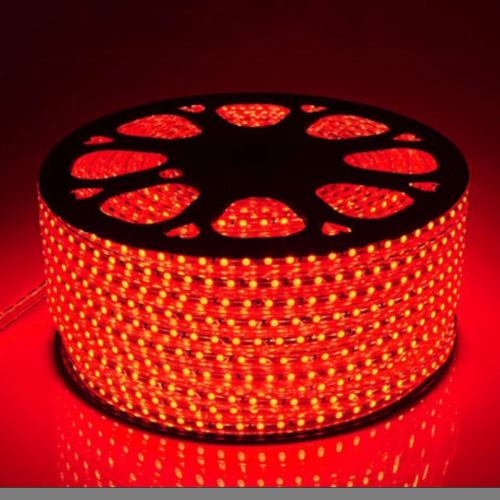CT Scan Machine: Revolutionizing Medical Imaging by CMED Radiology Private Limited
CT (Computed Tomography) scan machines have become an indispensable part of modern medical diagnostics, allowing healthcare professionals to view the inside of the human body with unparalleled precision. At CMED Radiology Private Limited, we are proud to provide state-of-the-art CT scan machines that offer cutting-edge imaging solutions to meet the evolving needs of medical professionals.
What is a CT Scan Machine?
A CT scan machine is a specialized medical imaging device that combines multiple X-ray images taken from different angles and uses computer processing to create cross-sectional views (slices) of bones, blood vessels, and soft tissues inside the body. These detailed images provide critical information to diagnose various medical conditions.
Key Features of CT Scan Machines by CMED Radiology
At CMED Radiology Private Limited, we ensure that our CT scan machines are equipped with the latest technology to deliver the most accurate results. Some of the key features of our machines include:
1. High-Resolution Imaging: Our machines provide crystal-clear images that help detect even the smallest abnormalities.
2. Rapid Scanning: Modern CT scan machines are faster, reducing patient discomfort and minimizing exposure to radiation.
3. 3D and Multiplanar Imaging: Advanced software allows for detailed 3D reconstructions and multiplanar imaging, which are invaluable for planning surgeries or assessing treatment progress.
Applications of CT Scan Machines
CT scans have a wide range of applications across various medical fields, and they are crucial for diagnosing and monitoring numerous conditions. Some of the primary uses of CT scans include:
• Oncology: CT scans are frequently used to detect tumors, determine their size, and monitor the progress of cancer treatment.
• Neurology: A CT scan of the brain can identify hemorrhages, tumors, and other abnormalities, making it essential for stroke evaluation.
• Orthopedics: Bone fractures, joint problems, and skeletal abnormalities can be examined in great detail.
• Cardiology: Coronary artery disease and other heart conditions can be assessed through specialized cardiac CT scans.
• Emergency Medicine: In trauma cases, a CT scan can provide immediate insights into internal injuries, bleeding, or fractures.
How a CT Scan Works
A CT scan is a non-invasive and painless procedure. Here’s how it works:
1. Patient Positioning: The patient lies on a motorized table that slides into the cylindrical CT scanner.
2. X-ray Exposure: The machine rotates around the patient, sending narrow X-ray beams through the body from various angles.
3. Data Collection: Detectors within the machine measure the amount of X-ray absorption in different tissues.
4. Image Creation: The data is processed by a computer to create cross-sectional images (slices) of the scanned area, which can then be assembled into a 3D image.
Benefits of Using CT Scans
CT scans offer numerous benefits, both for patients and healthcare providers. Some of the key advantages include:
1. Precision and Detail: CT scans provide more detailed images than traditional X-rays, helping doctors make more accurate diagnoses.
2. Non-Invasive: Unlike surgical procedures or other invasive diagnostic tools, CT scans are completely non-invasive.
3. Fast and Efficient: Modern CT machines can complete a scan within minutes, making it an ideal tool in emergency situations.
4. Comprehensive Imaging: A single scan can capture images of bones, soft tissues, and blood vessels, providing a complete picture of the patient’s condition.
Advancements in CT Technology
With advancements in technology, CT machines are becoming faster, more accurate, and safer for patients. Some of the notable advancements include:
• Low-Dose CT Scans: To reduce radiation exposure, modern CT scan machines are equipped with low-dose technology that minimizes the amount of radiation without compromising image quality.
• Dual-Energy CT: This technology uses two different energy levels of X-rays to provide more information about tissue composition, improving the accuracy of diagnoses.
• Artificial Intelligence (AI): AI-powered CT machines can enhance image processing, allowing radiologists to detect abnormalities more quickly and accurately.
Why Choose CMED Radiology Private Limited for CT Scan Machines?
At CMED Radiology Private Limited, we understand the critical role that CT scans play in patient care. Our CT scan machines are built with cutting-edge technology to ensure superior imaging, faster scans, and reduced radiation exposure. Here’s why you should choose us:
1. Industry-Leading Technology: Our machines are equipped with the latest advancements in CT technology, providing precise and reliable diagnostic results.
2. Comprehensive Support: From installation to maintenance, our team offers complete support to ensure your CT machine functions optimally.
3. Customization Options: We provide tailored solutions to meet the unique requirements of hospitals, diagnostic centers, and clinics.
CT scan machines have transformed the field of medical diagnostics, offering unparalleled insights into the human body. At CMED Radiology Private Limited, we are committed to providing high-quality CT scan machines that meet the needs of healthcare providers and ensure the best possible patient care. Whether you’re looking to upgrade your facility’s imaging capabilities or expand your diagnostic services, our CT scan solutions are designed to deliver exceptional performance and reliability.
For more information about our CT scan machines, contact CMED Radiology Private Limited today.
https://www.c-med.in/cmc-amc-services-for-ge-siemens-mri-ct-systemsCT Scan Machine: Revolutionizing Medical Imaging by CMED Radiology Private Limited
CT (Computed Tomography) scan machines have become an indispensable part of modern medical diagnostics, allowing healthcare professionals to view the inside of the human body with unparalleled precision. At CMED Radiology Private Limited, we are proud to provide state-of-the-art CT scan machines that offer cutting-edge imaging solutions to meet the evolving needs of medical professionals.
What is a CT Scan Machine?
A CT scan machine is a specialized medical imaging device that combines multiple X-ray images taken from different angles and uses computer processing to create cross-sectional views (slices) of bones, blood vessels, and soft tissues inside the body. These detailed images provide critical information to diagnose various medical conditions.
Key Features of CT Scan Machines by CMED Radiology
At CMED Radiology Private Limited, we ensure that our CT scan machines are equipped with the latest technology to deliver the most accurate results. Some of the key features of our machines include:
1. High-Resolution Imaging: Our machines provide crystal-clear images that help detect even the smallest abnormalities.
2. Rapid Scanning: Modern CT scan machines are faster, reducing patient discomfort and minimizing exposure to radiation.
3. 3D and Multiplanar Imaging: Advanced software allows for detailed 3D reconstructions and multiplanar imaging, which are invaluable for planning surgeries or assessing treatment progress.
Applications of CT Scan Machines
CT scans have a wide range of applications across various medical fields, and they are crucial for diagnosing and monitoring numerous conditions. Some of the primary uses of CT scans include:
• Oncology: CT scans are frequently used to detect tumors, determine their size, and monitor the progress of cancer treatment.
• Neurology: A CT scan of the brain can identify hemorrhages, tumors, and other abnormalities, making it essential for stroke evaluation.
• Orthopedics: Bone fractures, joint problems, and skeletal abnormalities can be examined in great detail.
• Cardiology: Coronary artery disease and other heart conditions can be assessed through specialized cardiac CT scans.
• Emergency Medicine: In trauma cases, a CT scan can provide immediate insights into internal injuries, bleeding, or fractures.
How a CT Scan Works
A CT scan is a non-invasive and painless procedure. Here’s how it works:
1. Patient Positioning: The patient lies on a motorized table that slides into the cylindrical CT scanner.
2. X-ray Exposure: The machine rotates around the patient, sending narrow X-ray beams through the body from various angles.
3. Data Collection: Detectors within the machine measure the amount of X-ray absorption in different tissues.
4. Image Creation: The data is processed by a computer to create cross-sectional images (slices) of the scanned area, which can then be assembled into a 3D image.
Benefits of Using CT Scans
CT scans offer numerous benefits, both for patients and healthcare providers. Some of the key advantages include:
1. Precision and Detail: CT scans provide more detailed images than traditional X-rays, helping doctors make more accurate diagnoses.
2. Non-Invasive: Unlike surgical procedures or other invasive diagnostic tools, CT scans are completely non-invasive.
3. Fast and Efficient: Modern CT machines can complete a scan within minutes, making it an ideal tool in emergency situations.
4. Comprehensive Imaging: A single scan can capture images of bones, soft tissues, and blood vessels, providing a complete picture of the patient’s condition.
Advancements in CT Technology
With advancements in technology, CT machines are becoming faster, more accurate, and safer for patients. Some of the notable advancements include:
• Low-Dose CT Scans: To reduce radiation exposure, modern CT scan machines are equipped with low-dose technology that minimizes the amount of radiation without compromising image quality.
• Dual-Energy CT: This technology uses two different energy levels of X-rays to provide more information about tissue composition, improving the accuracy of diagnoses.
• Artificial Intelligence (AI): AI-powered CT machines can enhance image processing, allowing radiologists to detect abnormalities more quickly and accurately.
Why Choose CMED Radiology Private Limited for CT Scan Machines?
At CMED Radiology Private Limited, we understand the critical role that CT scans play in patient care. Our CT scan machines are built with cutting-edge technology to ensure superior imaging, faster scans, and reduced radiation exposure. Here’s why you should choose us:
1. Industry-Leading Technology: Our machines are equipped with the latest advancements in CT technology, providing precise and reliable diagnostic results.
2. Comprehensive Support: From installation to maintenance, our team offers complete support to ensure your CT machine functions optimally.
3. Customization Options: We provide tailored solutions to meet the unique requirements of hospitals, diagnostic centers, and clinics.
CT scan machines have transformed the field of medical diagnostics, offering unparalleled insights into the human body. At CMED Radiology Private Limited, we are committed to providing high-quality CT scan machines that meet the needs of healthcare providers and ensure the best possible patient care. Whether you’re looking to upgrade your facility’s imaging capabilities or expand your diagnostic services, our CT scan solutions are designed to deliver exceptional performance and reliability.
For more information about our CT scan machines, contact CMED Radiology Private Limited today.
https://www.c-med.in/cmc-amc-services-for-ge-siemens-mri-ct-systems







